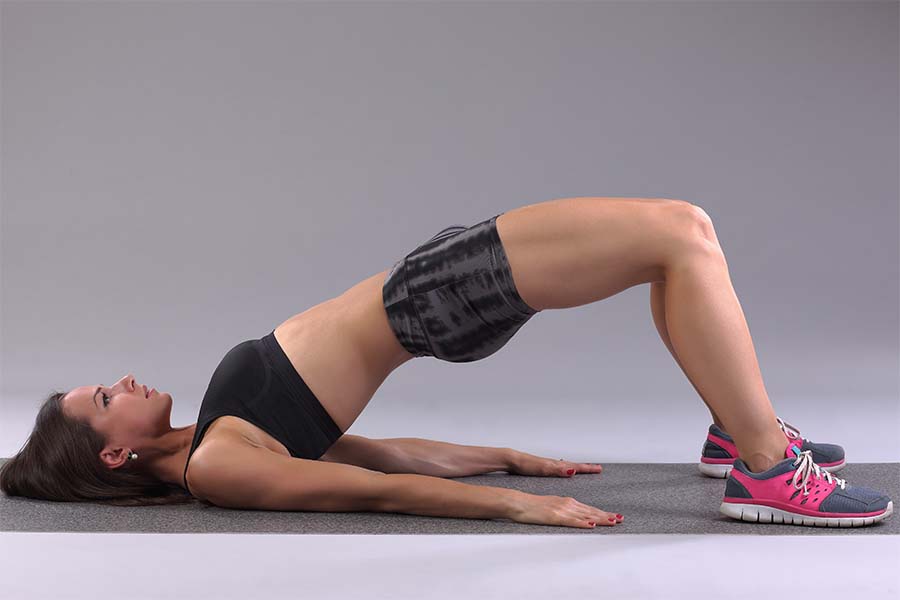Have you become so used to chronic back pain that it has become a part of your life?
Is your athletic performance declining day by day?
If you nodded yes to either of these questions, you have a weak core, my friend! Also known as lumbo-pelvic-hip complex or LPHC.
Thousands of athletes strive each day and work hard despite their busy schedule, but they neglect LPHC training, aka core training, because all the limelight is on muscle building and weightlifting.
However, you can maximize performance through strength & conditioning training. It helps strengthen your body, improve your over all health, boost your sports endurance and enhance your skills, stamina, power, and performance.
What Is the LPHC?

The lumbo-pelvic hip complex (LPHC), also called core, is a group of muscles and joints that work together to support the spine and pelvis.
The LPHC is the source of all power and movement in our bodies. It's where upper body muscles send their force to, so they can create movements at lower levels like running, kicking a ball, or just standing up from sitting down!
When most people think of the core, they tend to only associate it with their abdominal muscles. However this term also refers to a group or network that includes all other major muscle groups in your lower back including lumbar spine (lower portion), pelvic region and diaphragm among others connected together by nerves running through them which makes up what we call LPHC.
Related Article: Kettlebell Ab Workout: 14 Week Progression for Increased Core Strength
Lumbo-Pelvic Hip Complex Dysfunction
The exact cause of LPHC dysfunction is unknown. It is thought to be due to multiple factors, including structural abnormalities, improper breathing, muscle weakness, and poor posture.
The symptoms vary depending on the severity of the condition. However, they may include pain in the hips or lower back, difficulty in moving the hips, and clicking or popping sounds when moving the hips.
Importance of LPHC Muscles
These muscles help stabilize the spine and pelvis and generate force when athletes walk, run, or jump. It also helps us move more efficiently by providing a stable foundation and instant access to energy for our limbs.
The LPHC is a critical component of athletic performance. Strong core muscles help athletes to generate power and stamina. They also encourage injury prevention and agility improvement.
According to research, poor LPHC strength affects the movement of tibiofemoral and patellofemoral joints also known as the knee joints, apart from the forces that influence these joints across various motion planes.
So, it is essential to maintain a strong and healthy LPHC through exercises given by strength and conditioning professionals or strength coaches.
LPHC Exercises From a Conditioning Coach
Are you wondering what are the best workouts for LPHC strength?
Well, the strength & conditioning training that delivers dependable benefits and holds on to the test of time are excellent.
And who can suggest a better training routine other than a conditioning coach? Jim McCrossin has been the Director of Sports Medicine for the Philadelphia Flyers hockey team for 4 years and spent the previous 18 years as the head athletic trainer and strength conditioning coach.
According to McCrossin, “A fantastic fitness program is based on your functional movement assessment. Since everyone is different, a strength program should be created especially for them. But if I had to choose one important component, it would be ensuring the lumbar-pelvic hip complex (LPHC) is properly developed to prevent fitness problems”.
Jim discussed some of his personal training principles and techniques, which have proven effective over the years and are still the cornerstones of his team's current programming.
Related Article: 4 Weighted Conditioning Workouts to Replace Your Cardio Deck
Here is what he suggests will work best for improving performance, speed, agility, and focus.
Exercises for Beginners
The following are the best conditioning exercise options for beginners, students and athletes:
Glute Band Pull

- Attach a sturdy band to a stationary object. Take hold of it using two overhand grips.
- To put a lot of tension on the band, walk it out.
- Squeeze your glutes at the top and make sure you obtain a good hip hinge.
Reverse Lunge to Hold

- Keep your legs parallel as you stand.
- Step your left leg back onto the ball of your left foot while bending both knees around 90 degrees.
- For extra stability you can gently place your hands on your right knee.
- Hold for 30 seconds.
- Push off the back foot moving your foot forward until your legs are parallel.
- Repeat on the opposite side.
McGill Sit Up

- Lie on your back. Put your hands under your lower back after extending your right leg and bending your left knee to place your foot firmly on the mat.
- Breath in and tighten your abdominal muscles. Keeping your core tight the entire time, exhale as you tuck your chin into your chest and drag your ribs to your hips to lift shoulder blades, and upper back off the ground.
- As you drop your shoulders to return to the beginning posture, breathe in deeply.
Hip Bridge

- Lie on your back with bent knees, feet flat on the floor, and your hips up.
- Press into your feet into the the ground, sending your hips toward the sky.
- Be sure to keep your butt squeezed and abdominals braced throughout the entire movement.
- Bring your hips back to the floor.
- Repeat 3 sets of 10 reps.
Side Leg Abduction

- Lie on your side with your legs stacked up on each other and your head resting on your bottom arm.
- Slowly lift your top leg to make a 45-degree angle.
- Keep your hips level, and do not roll forward or backward.
- Hold this position for a count of five, then slowly lower your leg.
- Repeat this 3 times before switching to the other side.
Superman

- Place your hands in front of your head while lying on your stomach.
- Lift both arms and legs toward the ceiling while maintaining a neutral head position and a forward gaze toward the floor.
- Feel as though your hands and feet are extended far from your torso.
- Do 3 sets of 5 reps each.
Bent Knee Leg Raise

- Lie on your back with legs bowed and feet flat on the floor.
- Bring your legs up while keeping your knees bent till your upper leg forms a 90-degree angle with your trunk. To do this, place the fingers of both hands underneath the small of your back.
- Lift your head off the floor, then tighten your abdominal muscles by bringing your navel nearer your spine.
- Pushing with your thighs, slowly extend your legs as far as possible. As your legs lengthen, keep your abs firm and avoid lowering your feet to the ground. Extend your legs, then retract them.
Frog Jumps

- Stand with your feet at shoulder width. Put your arms by your sides and squat down to a 3/4 squat.
- Take a brief pause before preparing to leap up and forward by roughly 2 feet with all your might. Jump up and land roughly 2 feet in front of where you started.
- Bend your knees as you come back down and settle back into your hips to take the impact of the landing.
- Continue doing this to lower yourself to the bottom position in preparation for your next jump; however, this time, instead of jumping forward, you'll jump backward around 2 feet, landing back where you began.
- Perform continuous cycles of forwarding and backward jumps.
Related Article: Workout Plan to Build Stronger Core & Strength
FAQs
1. How many muscles are there in LPHC?
There are 29-35 muscles in LPHC.
2. How do I strengthen my LPHC?
You can strengthen your LPHC through exercises like side leg abductions, frog jumps, and glute band pulls, etc.
3. Is pelvic tilt curable?
Physical therapy, which mainly consists of muscle-strengthening exercises, stretches, and massages, may usually rectify a pelvic tilt.
4. How do you assess Lumbo pelvic control?
The active straight leg raise (ASLR) test for assessment throughout the sagittal plane movement and the active hip abduction (AHAbd) test for evaluation during frontal plane movement are two assessments of lumbo pelvic control.
Conclusion
As you can see, having a strong and stable LPHC is the key to athletic performance. Following the exercises in this article can build that strength and stability, resulting in better performance and fewer aches and pains. So get started today. Your body will thank you for it!
Reading List
Core Sliders: Add Excitement and Fun to Your Ab Workout
Core Destroyer: 12-Week Ab Workout for the Perfect Six-Pack
15 Minute Core Slider Workout Plan | Incorporating Sliders Into Your Workout Routine
Article Sources
- Oleksy, Łukasz, et al. “The Relationship Between Lumbo-Pelvic-Hip Complex and Knee Joint Dysfunctions.” Journal of Novel Physiotherapies, vol. 8, no. 1, 2018, p. e149, https://doi.org/10.4172/2165-7025.1000e149.











